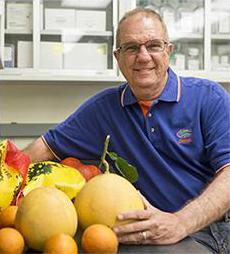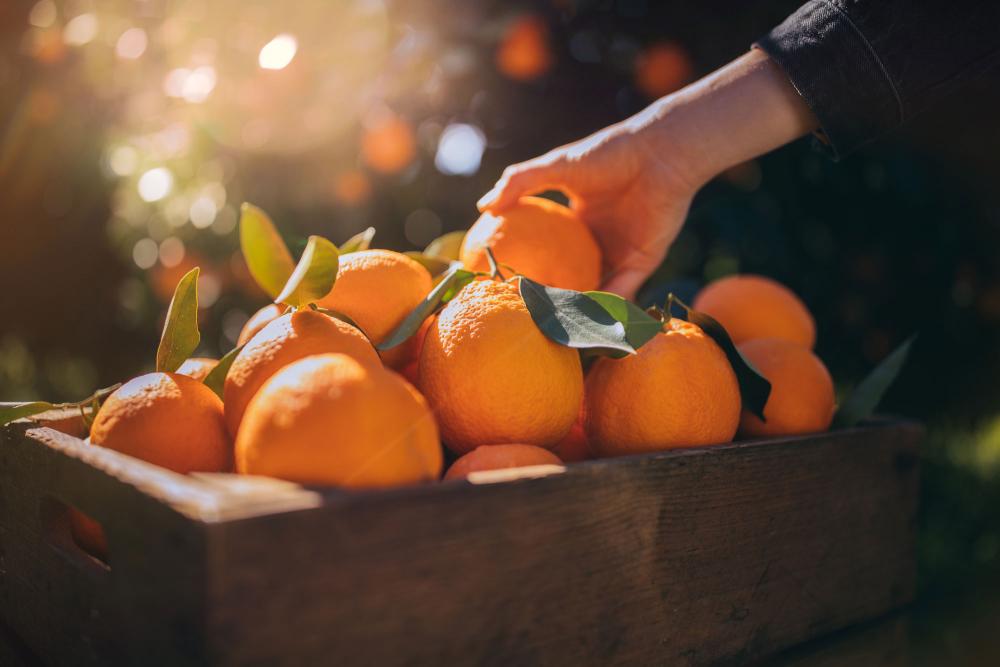3 min Read
For more than 30 years, Fred Gmitter has studied the genetic code of citrus fruits — the genes that determine how the fruit tastes, smells, and looks. Gmitter, a professor of horticultural sciences at the University of Florida’s Citrus Research and Education Center, uses that genetic knowledge to develop improved varieties of citrus plants. Today, much of his research focuses on ways to make Florida’s famous orange trees more resilient to citrus greening, a deadly plant disease that has decimated production across the state.
We spoke with Gmitter about his unconventional career journey, his research, and what makes citrus fruits special.
[qaquote]
"To me, that shows the power and importance of plant breeding. By combining genetic knowledge with plant breeding tools, we can make plants that can withstand disease, pests and more."
Photo by: Tyler Jones (UF/IFAS Gainsville)
[/qaquote]
Tell us a bit about your background. How did you become a plant breeder?
I had an unusual path to plant breeding. When I started college, I was pursuing a degree in English literature. I decided that wasn’t the right path for me, so I left school after three years. I worked doing all sorts of things — I was a truck driver, a courier, and a warehouse worker. During my five years as a warehouseman and driving, I grew really interested in fruits and vegetables. I knew I wanted to study agriculture. So, I went back to school and finished my degree at Rutgers in New Jersey, where I took a bunch of agriculture science classes.
I was nervous I was too old to complete a PhD program, but a Rutgers professor told me to go for it. I’m so glad he did. I went to the University of Florida, initially to study peaches, but was assigned to work on citrus. It was a roundabout journey, but I feel really lucky to get to work with such a unique fruit.
What makes citrus so interesting?
I think humans are really cross-wired with citrus. There’s something deep in our ancestral DNA that brings us to citrus. If I show you a picture of a lemon, your mind immediately smells the lemon. It’s an evergreen plant and the flowers, when they are in bloom, have the most intoxicating aroma you can imagine — except for the fruit.
Biologically, there are a lot of things that are unique and different about citrus compared to other fruits and vegetables. Many varieties of citrus, such as the sweet orange, grapefruit and lemon, produce seeds that are basically clones of the mother plant. You can plant the seed and you get a plant that is genetically identical to the parent. That makes breeding citrus complex and interesting.
It also means that there’s a lot of opportunities for the naturally occurring genetic changes, called mutations, in citrus fruits. These mutations can change the appearance of the foliage, flowers, fruit, or stems of any plant. The oranges and grapefruits we enjoy today were developed through this process.
All of the grapefruit varieties available now are mutants from a tree found in the Caribbean. The original grapefruit had white flesh and 50 seeds in each fruit. Through a series of spontaneous genetic changes, it went through an evolution. First becoming a white, nearly seedless fruit, and then developing its blush color.
What kind of citrus varieties have you worked on?
Originally, my focus was on improving fruit quality. We wanted to make the tastiest, best smelling, most attractive citrus fruits. Today, though, I’m looking for plant breeding solutions to citrus greening, the disease that’s attacking our orange trees.
I developed a new hybrid variety of mandarins with excellent flavor, color and appearance. We released it on the market at the worst possible time for Florida citrus — just as citrus greening was exploding across the state. No grower wanted to purchase and plant a new variety because they were worried they would be out of business in five years. Only one farmer in the entire state of Florida invested in the new variety and planted about 100 acres of them. When the trees were two years old, they started to show signs of citrus greening. The farmer decided not to pull the trees out and it was the right decision. Those trees are still alive today. They tolerate the disease. They’re infected, but they continue to grow and produce.
To me, that shows the power and importance of plant breeding. By combining genetic knowledge with plant breeding tools, we can make plants that can withstand disease, pests, and more.



